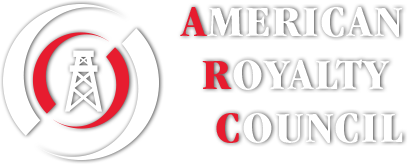IN THE BEGINNING…
The following is written with a hearty skepticism of being over-simplified about what is an enterprise so essential it is the heartbeat of our modern society. However one cannot be an integral part of the oil and gas business without some reasonable landscape, and where your role fits in the larger picture. As a royalty owner you are part of the largest most influential business history has ever known.
The process goes like this: The property must prove out in the review of oil and gas science. Land owners, some with mineral rights and deeds filed of record in the county courthouse where the property is located, are approached by land professional and offered an oil and gas lease. The lease is filed within the county land records. Producers are raising drilling capital as geologists study a variety of materials to best locate the well location within state oil and gas regulatory authority, and determine the depths to be drilled. This is often call the ‘upstream’ part of oil and gas production. A drilling contractor is hired, and the surface is prepared. (In the landowner community, there are owners of surface and possibly different owners of the mineral estate. When these ownership rights are divided, the subsurface rights are called ‘severed minerals.’) The drilling begins. At this point, there are many degrees of engineering and science applied to the drilling and completing of an oil and gas well. If production is found, an infrastructure of equipment and buried gathering pipelines are installed. The producer and the investors in the well, called ‘working interest,’ begin to market the oil or gas produced. Sometimes both oil and gas are produced from the same well. The marketing procedure has been one of the most challenged and debated events in the life of a well for many reasons, and affects the following points of contact between owners of the revenue.
It is at this point mineral owners become ‘royalty owners.’ It is also the place in the life of a well where the companies begin to divest their production (the physical oil and gas and related products) for money, and the fractional interest of each party due a share of that production revenue (sometimes called the ‘revenue stream’) is confirmed by a document called a division order. Within some oil and gas producing companies and also within companies that purchase oil and gas for the refining step, there is a department of information- gathering professionals called ‘division order analysts.’ Upon receipt of the division order, the parties entitled to receive income execute the form that conforms with the state statute that applies to the property.
Upon completion and confirmation of the owners division of interest, payment is made by check and accompanying production detail. All of the bold and underlined events are the four most important details in the prudent management of mineral rights in the oil and gas industry. There will be a much more detailed discussion in following chapters, but to keep the big picture going, an owner must have an understanding that there is much more to be completed in the life of a well.
After royalty owners, working interest owners, over-riding royalty owners and some producers are paid. (Some producers market the oil and gas to affiliated companies and retain ownership further ‘downstream.’) This is another highly debated and litigated event.
The oil and gas, due to the nature of their property, begin to go different routes. In many cases, oil leaves the lease location after it has been stored on the property until there is enough to sell to a third party and is trucked to a point of sale. Natural gas enters a gathering system, and is processed for a standardized condition of pressure while the liquids are removed.
Oil begins to be traded as a commodity. The futures market trades in 1000 barrel units, and the price seen so often is not the price all of the owners up to this point are paid. The speculation has adopted a premium, and as oil is sent to be refined, this price speculation stays with the price until it becomes the most common product the public knows – gasoline. There are hundreds of other products that are produced from crude oil, and some of those will be listed when we discuss oil further. For the royalty owner and producer, the price paid for crude has had many names, i.e., posted price, field price, P (-1), etc. What it means is, the prices are lower in the ‘upstream,’ and may vary as much as several dollars.
As oil is separated in its destination to gasoline, natural gas begins another route to mass consumption through an enormous infrastructure of pipelines. Again, some producers are in the pipeline business, but most offer their natural gas for sale to a marketing company who hires a third party transmission company – often called an ‘interstate pipeline.’ The gas is moved ‘downstream’ to the utilities market where it begins a highly-regulated trip to high volume business users and to the burner-tip in someone’s home.
At this highly over-simplified junction, royalty owners and producers become consumers of natural gas and gasoline. Heating oil is often used in the northeast for home heating, and natural gas has become the fuel source for the creation of electricity along with coal.
With each step in the production equation, there are issues of taxation, litigation, legislation, regulation (both state and federal) and the benefits derived from jobs and the enormous tax base that is established.
To be continued…



